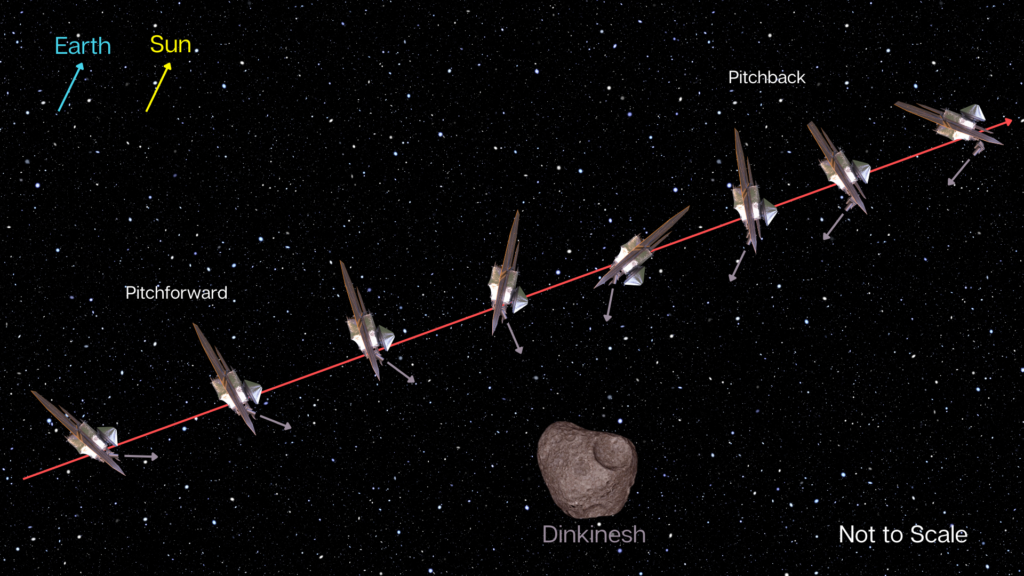NASA confirmed that the Lucy spacecraft successfully survived a rendezvous with the Dinkinesh asteroid and “called” home. Within the next week, it will send to Earth all the data collected during the flyby, including images of the small body.

The Lucy mission was launched in October 2021. Its purpose is to study Trojan asteroids in the Jovian orbit. This is how astronomers call two large groups of objects that are constantly located in the vicinity of the L₄ and L₅ of the Sun-Jupiter system.
On the way to the Lagrange points, Lucy will pass through the Main Asteroid Belt several times. After the launch of the spacecraft, the mission specialists decided to look for passing objects that could become additional targets. Success awaited them. Scientists discovered that the small asteroid Dinkinesh, with a diameter of 760 meters, was in the range of the probe. After that, they adjusted the course of Lucy so that the spacecraft could make a close flyby of this object.
The visit to Dinkinish took place on November 1. Two hours before the rendezvous, the spacecraft aimed its rotating platform at the asteroid with scientific instruments placed on it. Because of this, its high-gain antenna was pointed away from the Earth, and Lucy could not transmit data. After completing the flight and stopping data collection, the spacecraft aimed its antenna at the Earth again.
NASA has confirmed that it has already received a signal from Lucy and the spacecraft is fine. The Earth Messenger flew at a distance of 430 km from the asteroid, taking a series of pictures of Dinkinesh and obtaining spectra of its surface. Lucy has already started transmitting the data collected during the flyby to Earth. It is expected that this will take a week.
Lucy’s next target will be a 4-kilometer Main Belt asteroid Donaldjohanson. Its flight will take place on April 20, 2025.
Follow us on Twitter to get the most interesting space news in time
https://twitter.com/ust_magazine
